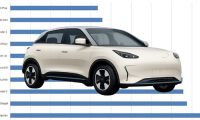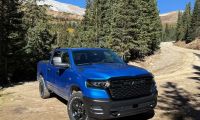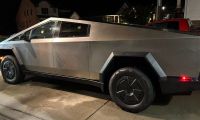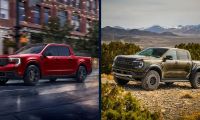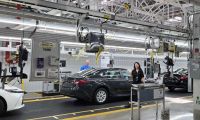Ford is moving its new Research Lab to Silicon Valley to work closer with technology companies as it aims to further develop with its Drive Innovation in Personal Mobility.
Why is this important? This will be the company’s first-ever dedicated R&D office on the west coast that will open early this year in order to continue the development of its automotive technology and creating in-car personal mobility experiences for consumers. This is also a clear sign that carmaker is serious about the inevitable future of its automobile with modern technology. As the manufacturer goes forward, it seeks to create what it calls an: “uncompromised personal mobility experiences for people around the world”. What this mean is a comprehensive user experience, beyond what we have been accustomed to relying on technology to keep every part of the car in synch with its user and other cars on the road.
The new lab will be the Silicon Valley hub for Ford to develop a wide spectrum of partnerships with technology firms and with universities. What is of interest is that the company directly aims to work with Google, Ideo (design), SunPower (solar), EPRI (EVs), and even Apple, much to my relief. The lab aims to make technology affordable for Ford clients, as well as identify new research investments and partners. It will seek to harness the power of seamless connectivity, cloud computing and clean technology.
In December 2011, the company delivered the new Ford Focus Electric to Google’s HQ in Mountain View, the first one to receive the car from Dearborn. And Ford's efforts are paying off so far, as it is the only domestic car manufacturer to gain market shares in each of the past three years. Analysts will note this is primarily due to small car sales, something Ford has been pushing for a few years. As to why California, the state is the largest small car market in the country representing approximately 30% of total retail sales, with the Fiesta and Focus boosting a 83% increase for the company in retail sales in 2011.
The Lab’s Vision. The strategy of the lab is to connect Ford’s Advanced Design Studio in Irvine, Calif., and Ford employees working with connectivity platform, such as Microsoft Corp. in Redmond, Wash. True to Ford’s new ideology, the lab will not duplicate or replace work being done at other research and innovation centers, nor its European facility, or the recently established technology office in Nanjing, China. It’s global Research and Innovation team is working in several key areas that will be supported by the work of the Silicon Valley lab. Here are a few things the Global Research lab is working on.
Personal Mobility is Ford’s take on consumer trends and the growth of mega-cities. The company is researching new business models that will help alleviate global gridlock through a holistic approach to personal transportation. Yes, that is my addition of a ”w” in front of the holistic, i.e., the whole.
Open-Source Hardware and software developer kits are specifically with New York City-based start-up Bug Labs, where the automaker is launching OpenXC, a research platform that will allow developers to access key vehicle data in order to innovate cloud-based apps and services. The first OpenXC beta developer kits will be shipped this month to several participating universities including MIT, University of Michigan and Stanford. This is of particular importance as manufacturers look for quality solutions to cut down on research cost, open-source product offer a wide array of engineer working on a single solution.
The Car as a Sensor, a long held idea to use vehicles’ sensors to find ways to improve driving and road conditions for all drivers. Ford is reaching out to developers by opening the data channels. One example of this is San Francisco-based Weather Underground looking at ways to detect vehicle windshield wiper activations in order to improve its weather proximity reporting accuracy.
One thing the company said that caught my attention was about the seamless integration of the traditional automobile platform with modern technology when Paul Mascarenas, Ford chief technical officer and vice president of Research and Innovation said: “Ford integrates technologies, software and electronics at the same pace as the most innovative companies in the world – our platform just happens to be the car”.
All in all this shows the company is on the right track as it pushes its effort to integrate modern and even future technologies into its vehicle portfolio. The paradigm shift here is to move away from constructing a chassis with a motor, a roof and seat to a more holistic platform, one that is closer to a smart phone than a rolling brick. As with all Ford cars I test drove, from prototypes to mules to final series, I’d say the company has done a great job and is placed well ahead of its competition.







